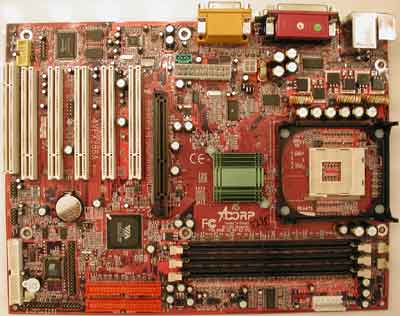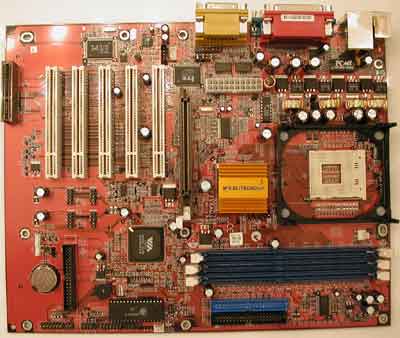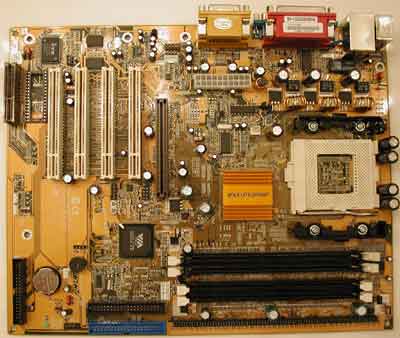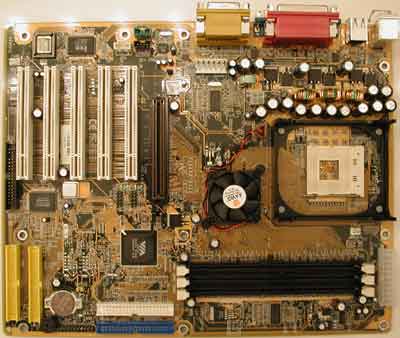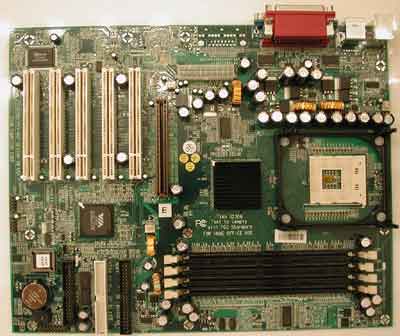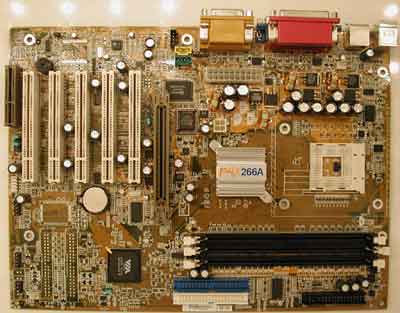
Original Link: https://www.anandtech.com/show/865
VIA P4X266 Motherboard Roundup - The Forbidden Five - January 2002
by Anand Lal Shimpi on January 4, 2002 2:10 AM EST- Posted in
- Motherboards
With all of VIA's recent successes in the chipset business the P4X266 has been an unfortunate blemish on their otherwise spotless record. Without VIA the Athlon could have never gained the acceptance and support that it did early on and without VIA we would have all been running PC100 SDRAM or RDRAM with our Pentium IIIs.
The P4X266 was a completely different situation however; it was a chipset that almost every motherboard manufacturer tried, but not a single one would dare to promote it. The chipset proved to us all that RDRAM isn't a necessity for the current Pentium 4 but it also made clear that engineering accomplishments can easily be forgotten in the name of politics.
What made things even more complicated for VIA was the fact that SiS' 645 was officially sanctioned by Intel and the 845 with DDR support was also being released much earlier than expected.
With increasing political pressure from Intel as well as much more viable alternatives, most motherboard manufacturers turned the other way when VIA mentioned the P4X266. The chipset had a lot of potential and performed quite well but there was simply too great of a risk involved to mass-produce boards based on the forbidden solution.
There were a few manufacturers however that went ahead with production of P4X266 based motherboards. These brave few have been shipping their P4X266 designs for months now in spite of political pressure and in spite of arguably superior alternatives.
Not too long ago we rounded up the best of the best i845 motherboards with DDR support and many cried out for a similar roundup of P4X266 offerings. While we're still waiting for more SiS 645 solutions to make a third roundup a reality, today we'll be taking a look at what we like to call The Forbidden Five - five motherboards based on the P4X266 chipset. For comparison purposes we've also thrown in VIA's own P4X266A motherboard sold under the VIA VPSD brand.
The Chipsets
VIA originally introduced the P4X266 chipset in August of last year but the true cash cow for VIA would end up being the P4M266. The reasoning is simple; major OEMs want highly integrated solutions and they're willing to order in much larger quantities than end users.
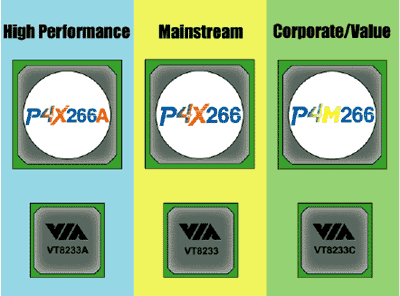
More recently, VIA introduced the P4X266A which boasted an improved memory controller that resulted in small real world performance improvements. The P4X266A North Bridge is pin compatible with the P4X266 North Bridge meaning that all of the boards seen here today can easily be modified by the manufacturer to use the new chip.
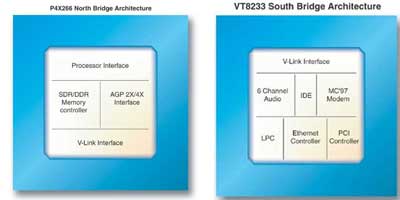
For the specs and details about the chipset itself we'll refer you back to our original P4X266 review since we're going to focus on the roundup of the individual motherboards alone in this article.
The Contenders
Because of the pending lawsuit against VIA, the P4X266 chipset has not been adopted by the vast majority of motherboard manufacturers. We've encountered a number of P4X266 designs that will never see the light of day, examples being boards from ABIT and AOpen, the latter we have actually tested.
The other issue we've run into is that there are some manufacturers that will produce and sell the boards however you will see absolutely no mention of the motherboards on their websites. This can be a problem for users especially when it comes to the issue of BIOS updates since no web support means no online BIOS updates for you to download.
With that said, here are the contenders:
ACorp 4VPX266A
Azza P4X2-AV
ECS P4VXAD
Shuttle AV40/R
Tyan Trinity 510
VIA P4XB-SA
Acorp 4VPX266A
|
Acorp 4VPX266A |
|
|
CPU
Interface
|
Socket-478
|
|
Chipset
|
VIA
P4X266
|
|
Form
Factor
|
ATX
|
|
Bus
Speeds
|
100
- 132MHz (in 1MHz increments)
|
|
Core
Voltages Supported
|
+
-0.1V to 0.275V
|
|
AGP
Voltages Supported
|
Not
Configurable
|
|
DRAM
Voltages Supported
|
Not
Configurable
|
|
Memory
Slots
|
3
184-pin DDR DIMM Slots
|
|
Expansion
Slots
|
1
AGP Slot
5 PCI Slots 1 ACR Slot |
|
Onboard
RAID
|
N/A
|
|
Onboard
USB 2.0/IEEE-1394
|
N/A
|
|
Onboard
LAN
|
VIA
VT8233 LAN
|
|
Onboard
Audio
|
Avance
Logic ALC100 AC'97 Codec
|
Acorp was one of the first manufacturers to release a P4X266 based motherboard however in spite of this, they still fail to offer any kind of recognition or support for the 4VPX266A on their website. This in itself makes the 4VPX266A a board you should stay away from since you won't be seeing any active support from the manufacturer for the product. In all fairness to Acorp, they are not big enough to deal with Intel's pressures to not promote/support the forbidden VIA chipset but in defense of the end user, they'd be better off not making the board at all.
It's really a shame that Acorp doesn't offer much support for the board since it would have potential if they spent a little time with it. The board has a pretty basic setup from an expansion slot standpoint; featuring 5 PCI slots and 3 DIMM slots. There is an option in the Acorp BIOS labeled "Performance Mode" which when enabled would cause random reboots with all 3 DIMM slots populated; thus we disabled Performance Mode for our testing of the motherboard.
The board uses Avance Logic's entry-level AC'97 codec, the ALC100, and there is clearly a reason why most manufacturers prefer the ALC200 series over this solution; the audio output was very poor in quality and the sound would cut out at times. We are not entirely sure if this is a problem with the codec or Acorp's board-level implementation of the codec; in either case, it's unacceptable and makes the onboard audio virtually useless.
Acorp was smart enough to use the VIA network controller contained within the VT8233 South Bridge coupled with an external VIA physical layer to provide 10/100 LAN support to the board. Unfortunately, going along with their theme of ignoring the existence of the board neither the LAN or the audio drivers were provided for download at Acorp's website.
Azza P4X2-AV
|
Azza P4X2-AV |
|
|
CPU
Interface
|
Socket-478
|
|
Chipset
|
VIA
P4X266
|
|
Form
Factor
|
ATX
|
|
Bus
Speeds
|
100
- 132MHz (in 1MHz increments)
|
|
Core
Voltages Supported
|
Not
Configurable
|
|
AGP
Voltages Supported
|
Not
Configurable
|
|
DRAM
Voltages Supported
|
Not
Configurable
|
|
Memory
Slots
|
3
184-pin DDR DIMM Slots
|
|
Expansion
Slots
|
1
AGP Slot
6 PCI Slots 1 CNR Slot |
|
Onboard
RAID
|
N/A
|
|
Onboard
USB 2.0/IEEE-1394
|
N/A
|
|
Onboard
Audio
|
VIA
VT1611A AC'97 Codec
|
Azza is another manufacturer we don't hear from too often but they wanted to make a name for themselves as being one of the brave few that would release a P4X266 based motherboard.
There's nothing too unique about the P4X2-AV other than the use of VIA's own VT1611A AC'97 Codec. The sound quality of this codec was decent, and definitely better than what we heard from the ALC100 on the Acorp board.
Our biggest complaints were with the perceived stability of the P4X2-AV during our testing; the board wasn't stable at all with 3 DIMMs and wasn't stable in general compared to the other solutions. None of the other boards had as many crashes in a two day testing period as the P4X2-AV.
ECS P4VXAD
|
ECS P4VXAD |
|
|
CPU
Interface
|
Socket-478
|
|
Chipset
|
VIA
P4X266
|
|
Form
Factor
|
ATX
|
|
Bus
Speeds
|
100,103,107,110,133,137,140,143,145,147MHz
|
|
Core
Voltages Supported
|
+0.05V,
+0.1V
|
|
AGP
Voltages Supported
|
Not
Configurable
|
|
DRAM
Voltages Supported
|
Not
Configurable
|
|
Memory
Slots
|
3
184-pin DDR DIMM Slots
|
|
Expansion
Slots
|
1
AGP Slot
5 PCI Slots 1 CNR Slot |
|
Onboard
RAID
|
N/A
|
|
Onboard
USB 2.0/IEEE-1394
|
N/A
|
|
Onboard
LAN
|
Realtek
RTL8100
|
|
Onboard
Audio
|
Avance
Logic ALC201A AC'97 Codec
|
As we mentioned in our Comdex 2001 coverage of motherboard manufacturers, ECS has by far the most complete Pentium 4 motherboard line out of all of the manufacturers. They are currently shipping boards based on the Intel 845, SiS 645 and VIA P4X266 chipsets.
The P4VXAD is one of the more mature P4X266 solutions that is current available on the market. The board is fully supported by ECS and you can easily download BIOS updates and drivers for the board from ECS' website. The expansion potential of the board is very similar to the other boards in this roundup and like most of the rest, the board wasn't 100% stable with all DIMMs populated as it wouldn't complete any of SYSMark's Office Productivity tests.
Another complaint we had was the lack of any ATX12V connector on the board. Just as we mentioned in our 845 DDR roundup, this isn't a problem if you have a high quality power supply capable of delivering enough current to the CPU but if you have an older power supply it may not work with the board. Just because the ATX12V connector isn't present doesn't mean that any power supply will work.
Just as we noticed in our 845 DDR roundup, ECS has a habit of offering a small list of FSB frequencies instead of offering FSB frequencies in 1MHz increments.
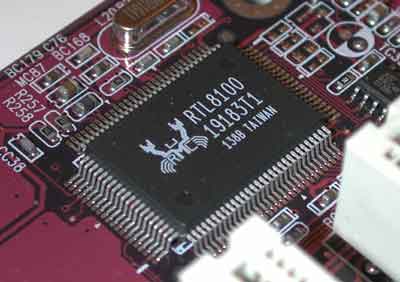
The P4VXAD uses Avance Logic's ALC201A AC'97 codec and Realtek's RTL8100 10/100 Ethernet controller to make the board just as feature filled as the Acorp but without the stability problems.
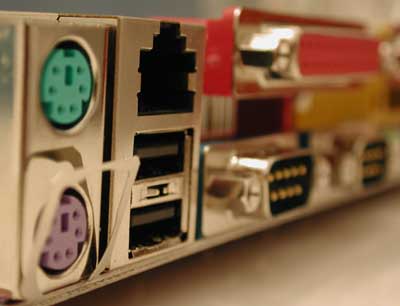
ECS also makes a Socket-423 board based on the P4X266 chipset as you can see below:
The Socket-423 version offers support for both DDR and regular SDRAM:
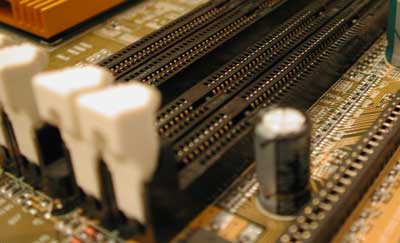
To further extend their Pentium 4 lineup, in the 2nd quarter of this year ECS will offer the P4VXAD with the new P4X266A North Bridge.
Shuttle AV40/R
|
Shuttle AV40/R |
|
|
CPU
Interface
|
Socket-478
|
|
Chipset
|
VIA
P4X266
|
|
Form
Factor
|
ATX
|
|
Bus
Speeds
|
100
- 160MHz (in 1MHz increments)
|
|
Core
Voltages Supported
|
1.100
- 1.850V (in 0.025V increments)
|
|
AGP
Voltages Supported
|
2.5,
2.55, 2.6, 2.65V
|
|
DRAM
Voltages Supported
|
2.5,
2.55, 2.6, 2.7V
|
|
Memory
Slots
|
3
184-pin DDR DIMM Slots
|
|
Expansion
Slots
|
1
AGP Slot
5 PCI Slots |
|
Onboard
RAID
|
Promise
PDC20265R
|
|
Onboard
USB 2.0/IEEE-1394
|
N/A
|
|
Onboard
Audio
|
VIA
VT1611A AC'97 Codec
|
Shuttle was another early adopter of the P4X266 chipset with their AV40/R. Just like most of the other motherboards in this roundup, the AV40/R was not stable with all memory banks populated making 2 DIMMs the realistic maximum for the board.
An interesting shortcoming of the motherboard is the use of an external thermistor to measure the CPU temperature rather than using the Pentium 4's on-die thermal diode to perform a much more accurate version of the same task.
The AV40/R offers many more voltage tweaking options than any of the other motherboards in this roundup which is what we've come to expect from most manufacturers, but we've been left disappointed with most of the competing solutions in this roundup; it's good to see that Shuttle put more effort into the production of the AV40/R than most.
Onboard audio is provided by VIA's own AC'97 codec and the only other feature is the Promise IDE RAID controller. Just as we noticed in our 845 DDR roundup, the Promise IDE RAID controller defaults all RAID 0 configurations to a 64KB stripe size with no hope for changing that option.
Tyan Trinity 510
|
Tyan Trinity 510 |
|
|
CPU
Interface
|
Socket-478
|
|
Chipset
|
VIA
P4X266
|
|
Form
Factor
|
ATX
|
|
Bus
Speeds
|
100
- 132MHz (in 1MHz increments)
|
|
Core
Voltages Supported
|
Not
Configurable
|
|
AGP
Voltages Supported
|
Not
Configurable
|
|
DRAM
Voltages Supported
|
Not
Configurable
|
|
Memory
Slots
|
4
184-pin DDR DIMM Slots
|
|
Expansion
Slots
|
1
AGP Slot
5 PCI Slots |
|
Onboard
RAID
|
N/A
|
|
Onboard
USB 2.0/IEEE-1394
|
N/A
|
|
Onboard
Audio
|
N/A
|
Tyan was the most recent to introduce a P4X266 based solution which somewhat confused us when we learned of its shipping date a week after Comdex 2001. To us it would only make sense for Tyan to pursue a 845 or SiS 645 solution but they have been shipping the Trinity 510 for months now.

The Trinity 510 is clearly geared for a much different crowd than most of the boards in this roundup. The presence of 4 DIMM slots and no onboard audio immediately tip you off that this is more of a serious P4X design than most. With high quality memory you can actually populate all four DIMM slots and have the board work perfectly fine as we noticed in our tests. This is a significant improvement over most of the designs in this roundup which would rarely work with all 3 DIMM slots populated. It seems like Tyan's experience with building massively complicated server boards has paid off in the design of the Trinity 510.
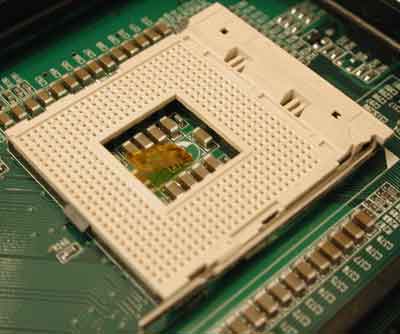
Our only complaint about the board is that Tyan chose to use an external thermistor to read the temperature of the CPU rather than relying on the much more accurate internal thermal diode of the Pentium 4. It also would have been nice to have an integrated LAN option on the board.
VIA P4XB-SA
|
VIA P4XB-SA |
|
|
CPU
Interface
|
Socket-478
|
|
Chipset
|
VIA
P4X266
|
|
Form
Factor
|
ATX
|
|
Bus
Speeds
|
100
- 199MHz (in 1MHz increments)
|
|
Core
Voltages Supported
|
+0.025
- 0.100V
|
|
AGP
Voltages Supported
|
Not
Configurable
|
|
DRAM
Voltages Supported
|
2.5,
2.56, 2.6, 2.65V
|
|
Memory
Slots
|
3
184-pin DDR DIMM Slots
|
|
Expansion
Slots
|
1
AGP Slot
5 PCI Slots 1 CNR Slot |
|
Onboard
RAID
|
N/A
|
|
Onboard
USB 2.0/IEEE-1394
|
N/A
|
|
Onboard
Audio
|
Avance
Logic ALC201A AC'97 Codec
|
The final contender we have in this roundup is VIA's own P4XB-SA, a motherboard based on the P4X266A chipset. The board isn't actually made by VIA but it's contracted out to a third party manufacturer and made under the VIA label.
The P4XB-SA was actually stable with all 3 DIMM slots populated and even offers DRAM voltage adjustment.
Obviously the biggest selling point for the P4XB-SA is the added performance that comes from the P4X266A North Bridge which you can judge for yourself in the test section.
The Performance Test
In order to stress all of the features that are offered on these motherboards we broke up the testing into two categories (RAID was only supported on one board and it worked fine): basic motherboard performance and onboard audio performance.. We also listened to the sound output from the boards to make sure that there were no noticeable issues with the codec implementation on the board itself.
|
Performance Test Configuration |
||
| Processor(s): |
Intel
Pentium 4 2.0GHz
|
|
| RAM: |
2 x 256MB Crucial DDR266 CAS 2.5 SDRAM
|
|
| Hard Drive(s): |
IBM 60GXP 40GB 7200 RPM
|
|
| Bus Master Drivers: |
VIA 4-in-1 4.35v
|
|
| Video Card(s): |
NVIDIA
GeForce3 Ti 550
|
|
| Video Drivers: |
NVIDIA
Detonator 23.11
|
|
| Operation System(s): |
Windows
2000 Professional SP2
|
|
| BIOS Revisions: |
ACorp
4VPX266A
Azza P4X2-AV ECS P4VXAD Shuttle AV40/R Tyan Trinity 510 VIA P4XB-SA |
6a6lwx39 P4X2-AV.b14 - 10/24/2001 VXADC14A AV40S25 - 9/30/2001 1.04 1/2/2001 |
Synthetic Memory Performance
First we'll start off with a couple of synthetic memory performance tests to find out if any manufacturers are implementing any BIOS optimizations that give them a slight memory performance advantage over the competition.
|
Here you can see the theoretical benefits of the P4X266A North Bridge as the P4XB-SA offers a 7.5% lead over its closest P4X266 competitor.
Among the five P4X266 based motherboards, the ECS is clearly the fastest in this test with the Tyan Trinity 510 bringing up the rear. We'd assume that Tyan had to make some performance sacrifices to offer support for a total of four DIMM slots.
Real-world Performance
|
Although the theoretical numbers indicated a much larger performance gap, it's clear by these performance figures that the P4X266A North Bridge doesn't offer all that much more. The less than 4% lead the P4XB-SA holds over the ECS P4VXAD would never be seen by an end user which may be why most manufacturers have not adopted the new North Bridge into their P4X266 designs right away.
Most of the boards perform within a 2% margin of one another making the performance argument one of little merit.
|
The performance standings are virtually identical under RtCW with the exception of the last place Tyan Trinity 510. Games tend to be much more dependent on memory performance and thus can show off otherwise unnoticeable differences in memory timing sacrifices.
Here we confirm our earlier suspicions that the Trinity 510 may have lower memory performance than the competing solutions in order to offer a 4 DIMM slots. For those that will populate all of the DIMM slots this isn't a major sacrifice at all, but those that won't use the extra slots would be better off considering the VIA or ECS solutions.
Onboard Sound Performance
Other than the Acorp 4VPX266A, none of the motherboards had any issues with their onboard sound in terms of audio quality. The remaining solutions would work just fine for your basic audio needs regardless of whether you're just listening to music, playing a game or want to hear Windows' sounds and alerts. The only reason you'd want to pursue a more advanced audio solution is if you have a 4.1 or 5.1 speaker setup in which case you will have to purchase a PCI sound card with those features.
This performance section is intended to see how much of a performance hit is incurred by using these onboard audio solutions.
|
All of the boards exhibited CPU utilization of less than 3% on our 2GHz Pentium 4 system which was directly in line with what we'd expect. Now let's consult a real world test of the performance drop seen when enabling onboard audio:
|
Again we see that even in a real world test case, the performance drops are all virtually identical. Other than the audio problems we saw with the ALC100 codec on the Acorp board, all of the solutions seem to have decent AC'97 audio subsystems.
Feature Comparison Table
|
Summary |
||||||||||||
|
DIMM
slots/stable
|
PCI
|
FSB
Speed Adjustment
|
Voltage
Tweaking
|
Overclocking
Results
|
RAID
Controller
|
FireWire/USB
2.0 Controller
|
Audio
|
LAN
|
||||
|
|
|
|
CPU
|
AGP
|
DRAM
|
Maximum
FSB w/ Max DIMMs
|
|
|
|
|
||
| ACorp 4VPX266A |
3/3
|
5
|
100
- 132
|
Y
|
N
|
N
|
117
|
N
|
N/N
|
ALC100
|
VIA
|
|
| Azza P4X2-AV |
3/2
|
6
|
100
- 132
|
N
|
N
|
N
|
123
|
N
|
N/N
|
VT1611A
|
N
|
|
| ECS P4VXAD |
3/2
|
5
|
100
- 147*
|
Y
|
N
|
N
|
110
|
N
|
N/N
|
ALC201A
|
RTL8100L
|
|
| Shuttle AV40/R |
3/2
|
5
|
100
- 160
|
Y
|
Y
|
Y
|
115
|
Y
|
N/N
|
VT1611A
|
N
|
|
| Tyan Trinity 510 |
4/4
|
5
|
100
- 132
|
N
|
N
|
N
|
N/A
|
N
|
N/N
|
N
|
N
|
|
VIA P4XB-SA |
3/3
|
5
|
100
- 199
|
Y
|
N
|
Y
|
125
|
N
|
N/N
|
ALC201A
|
N
|
|
Note: FSB frequencies not offered in 1MHz increments when a * is present
Final Words
Unfortunately for VIA, the P4X266 doesn't seem to have much of a chance thanks to Intel's pressures as well as SiS' competing 645 solution. Most of the major players have dropped support for the chipset leaving a handful of others to pick up the pieces, even VIA's own motherboards are very difficult to find in the retail channels compared to the larger names which will continue to keep this chipset out of the hands of the end users.
If you are set on purchasing a P4X266 based motherboard then the options are relatively simple; first and foremost, stay away from anything that doesn't have full manufacturer support and backing. The Tyan Trinity 510 is perfect for users that require a lot of memory and will populate all four DIMM slots, otherwise you'd be better off looking at either the VIA P4XB-SA, ECS P4VXAD or Shuttle AV40/R.
As we start to round up SiS 645 solutions it does seem like the P4X266 will never get the chance it truly deserved. With Intel's 845 already available in both DDR and SDR configurations, there's little reason to purchase a board that isn't 100% stable and widely available.

